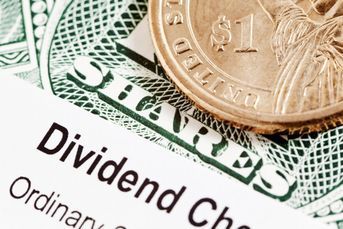Emerging markets make a comeback
The MSCI Emerging Markets Index is up 14.8% this year through August, including dividends, while the S&P 500 is up 7.8%
Emerging markets are back.
While the U.S. has grabbed the headlines this year with every new record high for the S&P 500, emerging-market stocks have quietly done even better. The MSCI Emerging Markets Index is up 14.8% this year through August, including dividends, while the S&P 500 is up 7.8% over the same period.
That’s a sharp reversal from recent years. The S&P 500 returned 6.5% annually from 2008 to 2015, while the MSCI Emerging Markets Index returned a negative 2.8% a year.
That eight-year period of U.S. dominance opened a monster gap between the valuations in the U.S. and those in emerging markets — a gap so wide that the emerging markets’ recent gains have barely budged it. The S&P 500 now trades at a price-to-earnings ratio of 24 (using 10-year trailing average earnings), while the MSCI Emerging Markets Index trades at a P/E ratio of 12.3.
There are signs that investors are worried about U.S. valuations. As I noted in a column on Wednesday, the five U.S. sectors that have historically been the most stable — so-called defensive sectors such as consumer staples and utilities — are meaningfully more expensive today than the five most volatile sectors, such as financials and technology. Translation: Investors fear a washout in U.S. stocks and are moving to higher ground.
That raises the question: Where are investors placing their sector bets in emerging markets?
Granted, sector risk doesn’t necessarily mean the same thing in emerging markets as it does in the U.S. Telecom, for example, has historically been a safe harbor in emerging markets, whereas in the U.S. it has been among the more volatile sectors. But by ranking the U.S. and emerging-market sectors according to their respective historical standard deviations (a commonly used measure of volatility) you can compare investors’ appetite for risk in emerging markets with that in the U.S.
At first glance, investors appear to be just as anxious about emerging markets as they are about the U.S. The average P/E ratio for the five most stable emerging-market sectors is 18.6, whereas the average P/E ratio for the five most volatile sectors is 12.7.
Dig deeper, however, and there’s a critical difference between the two camps: Emerging-market investors have gradually sought more risk in recent years, whereas investors in U.S. stocks have become increasingly cautious.
To fully appreciate that evolution, you have to travel back in time a few years. Emerging markets were king just before the financial crisis. The MSCI Emerging Markets Index rode a wave of popularity to a lofty P/E ratio of 34 when 2008 began. By comparison, the S&P 500’s P/E ratio of 24 seemed downright quaint at the time.
But not everyone was comfortable with the attention heaped on emerging markets in those days because investors were paying a huge premium for defensive emerging market sectors. The average P/E ratio for the five most stable emerging market sectors was 22.4 by the end of 2008, whereas the average P/E ratio for the five most volatile sectors was just 11.9.
As emerging-market valuations have gradually come back to earth, that spread in P/E ratios between the most stable and the most volatile sectors has gradually diminished. Investors, in other words, are increasingly seeking riskier assets in emerging markets.
It’s been just the opposite in the U.S. There was hardly any difference in the average P/E ratios between the most stable and the most volatile U.S. sectors when 2008 began. But as the U.S. increasingly became the world’s go-to stock market in recent years, that spread has swelled. Today the average P/E ratio for the five most stable U.S. sectors is 25, compared with 21 for the most volatile ones.
Investors appear to be making a shrewd bet that it’s time for emerging markets to shine again. And if they’re right, the recent gains in emerging markets could just be the beginning.
Nir Kaissar is a Bloomberg Gadfly columnist covering the markets. He is the founder of Unison Advisors, an asset management firm.
Learn more about reprints and licensing for this article.








